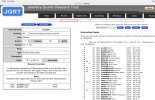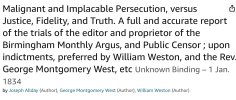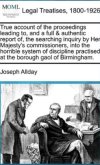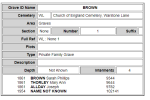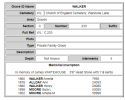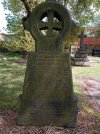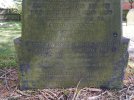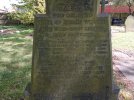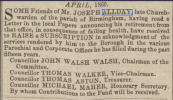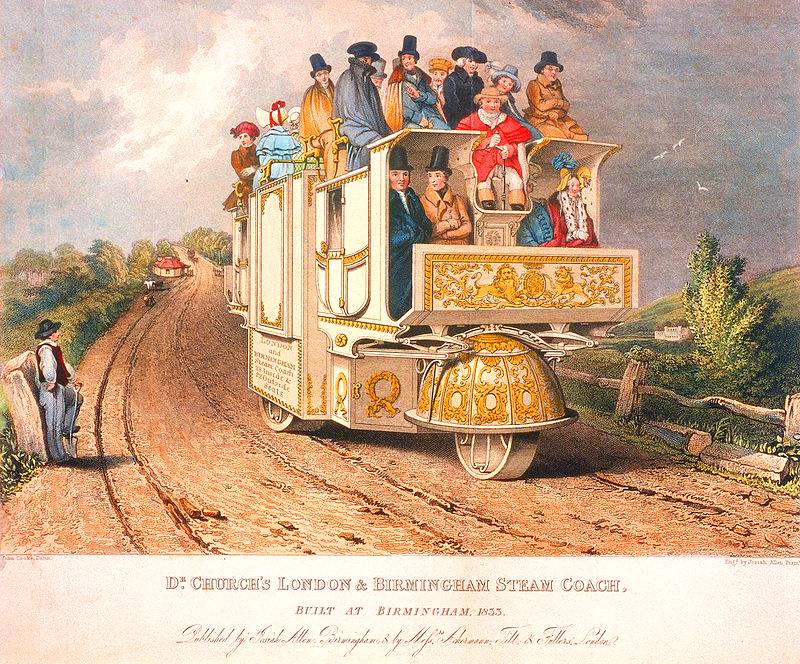Hi folks. I'm looking for the grave of Birmingham politician and journalist of sorts, Joseph Allday, 1798(?)-1861, which is, or was, at Warstone Lane cemetery.
From what I've read of him so far, Joseph seems a colourful character of decidedly mixed repute. You can read something of his exploits in Showell's Dictionary here:
https://www.gutenberg.org/files/14472/14472-h/14472-h.htm#Birm62
He is also, I believe, my 5 x great uncle.
Having achieved sufficient notoriety to make the Wikipedia article on Warstone Lane, I thought his grave might be one of the better known ones, but so far that doesn't seem borne out by the info boards at the cemetery itself and I've been unable to locate the grave, or confirm whether it is still present there.
I've been in touch with the Friends of Warstone Lane and Key Hill, who have provided me with some useful information on another elusive relative, but thought I'd see what knowledge or interest folk here might have before I trouble them further.
What I have so far:
Joseph's entry in the burial register, unlike those above and below it, gives no grave number, and under "Place of Interment" just says "1". The burial charges were £3 10s.
Joseph's wife Ann (of "Mrs Allday's Celebrated Tripe Establishment") was buried at Warstone Lane in 1878, with burial register listing plot C-233 and "ReOp qf(?) Grave Stone", which I'm reading as indicating a re-opened existing grave which may well be Joseph's.
Prior to finding that plot listing I had given section C a cursory scan on a recent visit to the cemetery. I didn't spot a grave mentioning Joseph or Ann, but did find a monument to Joseph's namesake and nephew (1838-1920), and the younger Joseph's wife Caroline in adjoining section A.
Joseph was apparently a dominant figure on Birmingham council for many years, and was still being written about written about by Showell and others some decades after his death, but his influence on the town appears not to have been a lasting one, and inspires only the occasional footnote in more recent histories, to my knowledge.
So I'd be interested to know if Joseph or his grave is still known of by locals or those with interest in Birmingham history. And does anyone know where plot C-233 might be, or have been?
Any thoughts, tips or general musings much appreciated!
Ed
From what I've read of him so far, Joseph seems a colourful character of decidedly mixed repute. You can read something of his exploits in Showell's Dictionary here:
https://www.gutenberg.org/files/14472/14472-h/14472-h.htm#Birm62
He is also, I believe, my 5 x great uncle.
Having achieved sufficient notoriety to make the Wikipedia article on Warstone Lane, I thought his grave might be one of the better known ones, but so far that doesn't seem borne out by the info boards at the cemetery itself and I've been unable to locate the grave, or confirm whether it is still present there.
I've been in touch with the Friends of Warstone Lane and Key Hill, who have provided me with some useful information on another elusive relative, but thought I'd see what knowledge or interest folk here might have before I trouble them further.
What I have so far:
Joseph's entry in the burial register, unlike those above and below it, gives no grave number, and under "Place of Interment" just says "1". The burial charges were £3 10s.
Joseph's wife Ann (of "Mrs Allday's Celebrated Tripe Establishment") was buried at Warstone Lane in 1878, with burial register listing plot C-233 and "ReOp qf(?) Grave Stone", which I'm reading as indicating a re-opened existing grave which may well be Joseph's.
Prior to finding that plot listing I had given section C a cursory scan on a recent visit to the cemetery. I didn't spot a grave mentioning Joseph or Ann, but did find a monument to Joseph's namesake and nephew (1838-1920), and the younger Joseph's wife Caroline in adjoining section A.
Joseph was apparently a dominant figure on Birmingham council for many years, and was still being written about written about by Showell and others some decades after his death, but his influence on the town appears not to have been a lasting one, and inspires only the occasional footnote in more recent histories, to my knowledge.
So I'd be interested to know if Joseph or his grave is still known of by locals or those with interest in Birmingham history. And does anyone know where plot C-233 might be, or have been?
Any thoughts, tips or general musings much appreciated!
Ed

